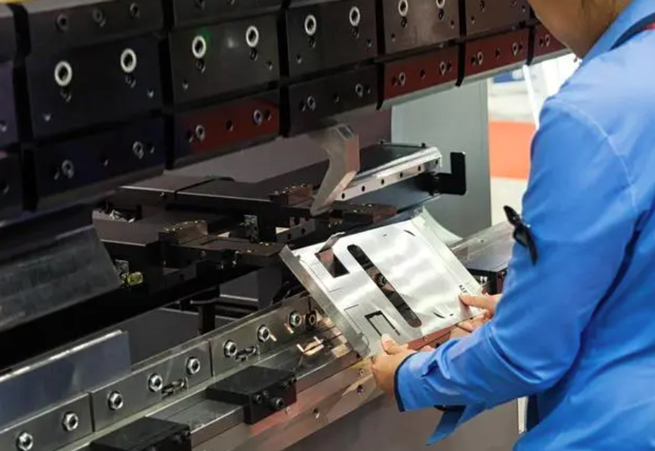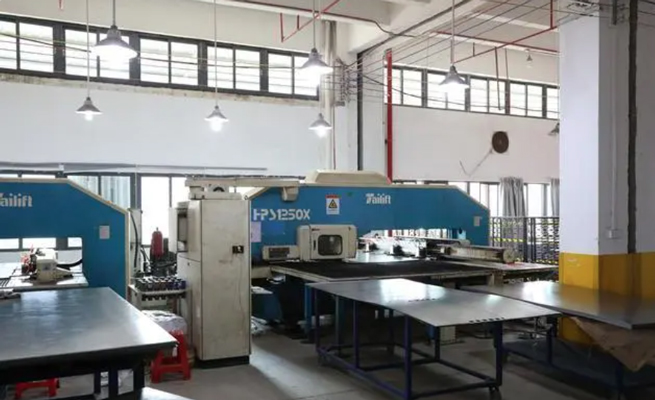
Sheet metal processing is divided into production, cutting, Stamping, Bending, forming, welding, polishing, spraying, printing, assembly and other processes. Today, we will introduce in detail the process knowledge of Stamping.
Stamping processing technology is a fiber optic Laser cutting production and processing method for metal materials, which is important for metal materials. According to pressure equipment such as stamping machines, the material is forced to deform or separate to obtain the actual required product parts, collectively referred to as stamping parts.
There are various situations in the stamping process of molds, and here I will summarize the most extensive stamping processes for everyone.
1. Punching and cutting
A general term for a stamping process that extracts materials. It includes: cutting, punching, punching, notching, cutting, chiseling, edge pressing, cutting, etc.
2. Appearance design
The stamping process mainly involves cutting off excess parts outside the material to ensure compliance with the specifications and model requirements.
3. Tongue cutting
Cut a certain part of the material into a slit, but not all of it is cut. It is common for a rectangle to only cut three sides and keep one side motionless, with the main purpose of fixing the step distance.
4. Flaring
This process is not extensive, and it is common to see the process of expanding the end or a certain end outward into a trumpet shape for tubular parts.
5. Necking
Contrary to flaring, it is a stamping process in which the end or a certain point of a tubular part must be reduced inward.
6. Punching
In order to better obtain the hollow part of the part, the complete material will be separated from the middle through a punch and a knife edge to obtain the corresponding hole size.
7. High precision stamping
When stamping parts require a fully bright section quality, it can be called "precision punching" (note: ordinary punching sections are divided into four parts: collapse angle zone, bright zone, fracture zone, and burr zone).
8. Full Bright Blanking
Unlike high-precision stamping, full bright stamping should be achieved in one step as much as possible.

9. Deep hole punching
When the diameter in the product is smaller than the thickness of the material, it can be mastered as deep hole punching, and the difficulty of stamping is manifested by the fact that the inserted needle is very easy to break.
10. Convex hull
The process of creating a protrusion on a flat material with relative application requirements.
11. Forming
Many friends master the process of forming sheet metal parts by Bending them, but it is not done carefully. Because sheet metal bending is a type of forming, it refers to the general term for all flowable material processes during forming.
12. Sheet metal bending
A basic process that involves brittle fracture of flat materials based on convex and concave die inserts to obtain relative angles and patterns.
13. Compression reinforcement
This is generally used in inclined angle sheet metal parts and sheet metal bending forming inserts. It is mainly based on creating bumps in the material at the bending position of the sheet metal parts to reduce material resilience and ensure stable angle.
14. Embossing
A process of pressing unique design patterns into the surface of a material based on an inlay needle, widely including embossing, small black dots, etc.
15. Coiling circle
One type of forming and manufacturing process is based on the process of folding the product design into a circular shape.
16. Flipping hole
The process of warping the threads of stamping parts to obtain a certain height of side edges.
17. Straightening
Mainly aimed at situations where product flatness requirements are high, when flatness errors occur in stamping parts due to stress fields, it is necessary to use the straightening process for adjustment.
18. Shaping
When the angle and shape of the product are not the basic specifications and models after molding, it is necessary to fully consider adding another process to adjust to ensure stable angle. This type of process is called "shaping".
19. Stretch
Generally, the entire process of obtaining hollow parts from flat sheet materials according to the method is called the stretching process, which is carried out based on convex and concave molds.
20. Continuously stretching
Generally, it refers to a stretching process in which materials at the same position are produced multiple times in a strip based on one or four molds.
21. Loosening and deep drawing
Both continuous drawing and deep drawing belong to the variable relaxation drawing series, which means that the wall thickness of the parts after drawing will be smaller than the thickness of the material itself.
22. Stretch
Its basic concept is similar to convex hull, which is to convex the material. However, deep drawing generally refers to small car parts, which belong to a relatively complex formed product series, and their deep drawing structure is also relatively complex.

23. Construction project model
A general term for a set of molds in which only one stamping process is carried out during the entire stamping process at a time.
24. Composite mold
A set of molds that can undergo two or more different stamping processes in one stamping process.
25. Stamping die
A set of molds is a general term for the types of molds that rely on a feeding belt to feed materials, arrange two or more processes in sequence, and feed them sequentially along with the stamping process to achieve qualified products.
